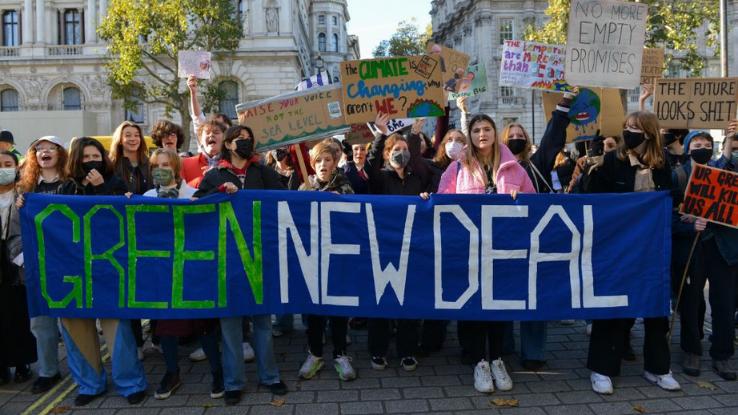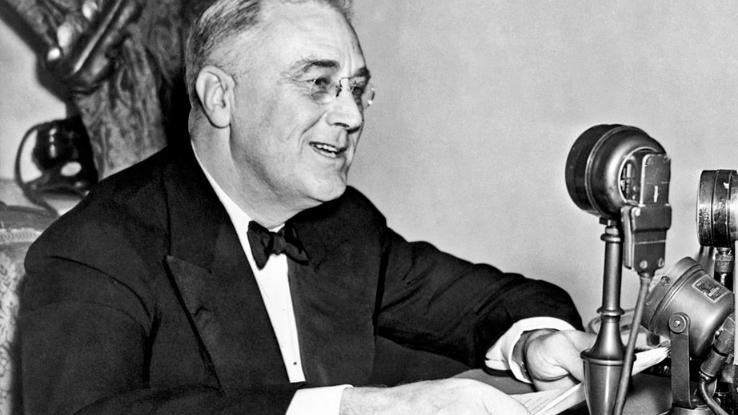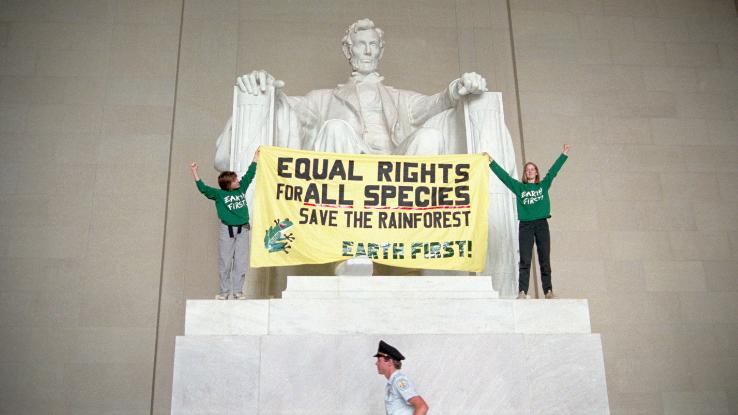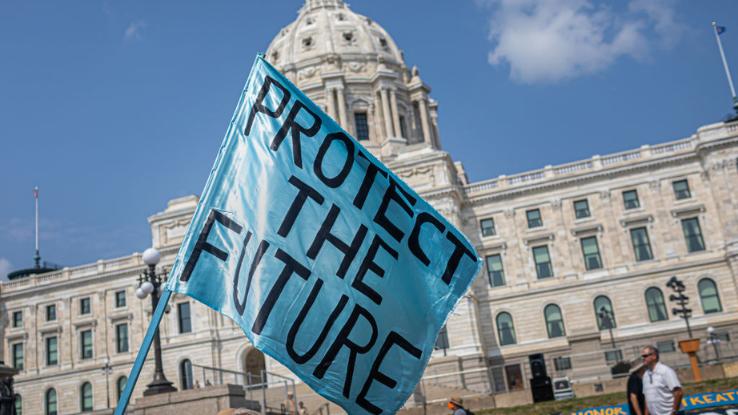What Is the Green New Deal, and How Would It Work?

In early 2019, the newly elected Rep. Alexandria Ocasio-Cortez (D-N.Y.), along with veteran Sen. Ed Markey (D-Mass.), introduced legislation that would change the world: the Green New Deal. The bill was a reaction to climate change meant to implement economic and environmental policies with the goal of bringing the United States to net-zero carbon emissions by 2050. Various provisions for sustainable farming practices, public transportation overhauls, infrastructure improvements, healthcare reform and guaranteed income were included in the bill.
The 2019 Green New Deal was met with opposition from multiple directions. Mitch McConnell (R-Ky.), the Senate Majority Leader at the time, claimed that the bill would “take a sledgehammer to America’s working class.” Even some less-critical figures and news outlets were still skeptical. NPR referred to the bill as “a really big — potentially impossibly big — undertaking.”
What’s striking about the bill is that it doesn’t put any of these suggested policies into effect. The 2019 Green New Deal was mostly an acknowledgment of climate change and the idea that these policies needed to be implemented at some point in the future. Ocasio-Cortez told NPR, “It could be part of a larger solution, but no one has actually scoped out what that larger solution would entail. And so that’s really what we’re trying to accomplish with the Green New Deal.”
The idea of a Green New Deal doesn’t start (or end) with Ocasio-Cortez. Activists have tried to bring larger-scale climate initiatives to U.S. policy since the 1970s and 1980s, and the term “Green New Deal” dates back to 2007. But where does this type of policy come from, how has it evolved — and will passing this legislation be as difficult as NPR and others thought it might be? Let’s take a closer look at the Green New Deal to see what it is and how it would work.
Why Does the Green New Deal Call Back to Roosevelt’s New Deal?

The Green New Deal takes its name from a series of federal projects carried out in the 1930s. The New Deal was a set of programs, policies and regulatory procedures enacted by President Franklin D. Roosevelt between 1933 and 1939 as a political response to the Great Depression. Its initiatives helped bolster the American people during that difficult time by regulating banks, creating jobs and supporting new infrastructure projects.
Unregulated banking and other financial practices during the roaring 1920s drove the U.S. into the depression, but the New Deal’s regulations and investment were ultimately what got the U.S. to the point of being able to provide assistance during World War II. The period of time after WWII is generally regarded as a period of prosperity and economic growth for the U.S.
The New Deal wasn’t one massive law, but a package or series of support policies that addressed the country’s problems in different fields. Structurally, a Green New Deal would resemble the original as a collection of proposals and public policy reforms — that’s where it gets its name. But instead of regulating banks, the Green New Deal would aim to regulate and stop the government subsidization of the fossil fuel industry. A Green New Deal would also focus on bringing different jobs to those who work in the fossil fuel industry and overhauling employment in general. Creating sustainable infrastructure for buildings, homes and transportation would also be a major aspect of a Green New Deal.
The Idea of a Green New Deal Isn’t New

Neither Sen. Ed Markey or Rep.Alexandra Ocasio-Ortez originated the term “Green New Deal.” Activists have been advocating for the environment since the latter half of the 20th century, especially in the 1960s and 1970s. Films have been made about the consequences of environmental destruction, like 2006’s An Inconvenient Truth and 1992’s FernGully. Critics of environmental advocates often minimize the cause by calling advocates “naive” or “hippies,” but research consistently demonstrates that climate change is a major issue.
In 2007, political journalist Thomas L. Friedman coined the term “Green New Deal” in the The New York Times. In his cautionary article, Friedman wrote, “The right rallying call is for a ‘Green New Deal.’ The New Deal was not built on a magic bullet, but on a broad range of programs and industrial projects to revitalize America. The same goes for an energy New Deal. If we’re to turn the tide on climate change and end our oil addiction, we need more of everything: solar, wind, hydro, ethanol, biodiesel, clean coal and nuclear power — and conservation.”
Friedman’s ideas weren’t new for the time, but calling them “Green New Deal” was. Referring to climate action as a Green New Deal highlights the climate crisis and acknowledges the severity of the situation. The Great Depression is often referred to as creating some of the worst living conditions in U.S. history — and climate change could have similarly devastating effects. A climate change-induced superstorm can decimate a city. Rising water levels may make many areas uninhabitable. Animals and ecosystems can also be adversely affected. We’re already seeing these consequences begin to develop, which is why the preventive measures of a Green New Deal are so urgently needed.
Lawmakers Must Act Sooner, Not Later

Referring to climate change reform as a Green New Deal helps point out the seriousness of the issue and the extensive policy revisions necessary to make an impact. Fortunately, there are climate-focused initiatives underway. More people than ever are using solar panels to power their homes, driving electric cars and choosing to recycle, among other efforts. But the work can’t stop there; the country needs to undertake large-scale, systemic efforts to limit the damage of climate change.
To combat climate change and other environmental harm, it may be necessary to undertake larger-scale efforts that impact daily life. Take plastic straws as an example. Researchers know that there are hundreds of millions of straws currently in the oceans creating pollution that harms wildlife and humans. In response, many companies stopped providing plastic straws, instead offering compostable paper alternatives or no straws at all. There was backlash — some of it rightful — but consumers have largely adapted. Compostable straws may not be the complete solution to the plastic straw issue, but they highlight why a Green New Deal matters.
If lawmakers can put the same level of effort into fighting climate change that Roosevelt put into ending the Great Depression, the world will benefit. Corporations can be held accountable and their activities regulated to prevent environmental damage and climate change. Buildings and transportation can get the necessary upgrades they need to become more eco-friendly.
A Green New Deal may also mean more little changes in your own life, too. If everyone does their part to help with this issue that’s defining the time we’re living in, it will require some effort — but it could change the future for the better. Biden’s new infrastructure bill also allocates funding for green causes. Could this be the start of a Green New Deal for the U.S.? Only time will tell.





